We are used to hearing stories about giants of the seas and oceans, but rivers also hold many secrets. In their depths live amazing creatures, the size of which can amaze the imagination. Some of them are peaceful and unpretentious, others are real predators, inspiring respect and even fear. Let's get acquainted with the largest inhabitants of rivers, which are not inferior to sea giants. 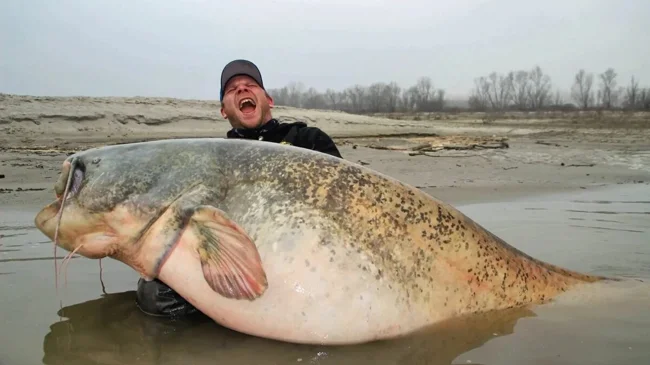
Carp - a freshwater long-liver 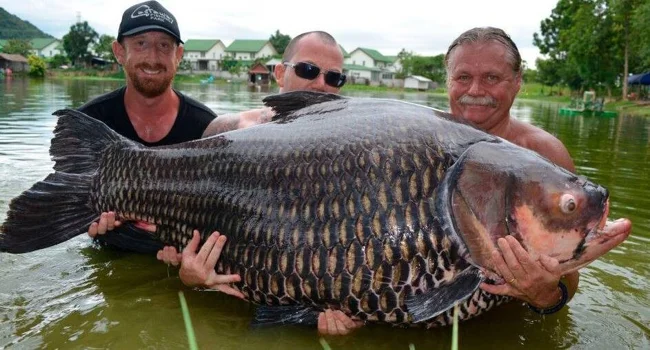
Carp is known to almost every fisherman. It is one of the most common fish in the world, which lives in quiet, stagnant or slowly flowing waters with a hard or slightly silted bottom.
Despite their familiar appearance, carp can surprise with their size: individual specimens grow up to 1.2 meters and can weigh over 100 kg! True, such giants are becoming increasingly rare, but truly record-breaking specimens have been recorded in the history of fishing.
Carp is very voracious: it feeds on crustaceans, mosquito larvae, small fish, frog eggs and aquatic vegetation. Interestingly, it is a stomachless fish - this means that it eats almost without interruption.
Carp live a long time, up to 30 years, and some scientists believe that individual specimens are able to live to a more respectable age. Carp meat is valued for its taste, although it has many bones. Due to its large size, tasty meat and unpretentiousness, carp have become a popular object of fishing and breeding.
Nile perch - the scourge of African rivers 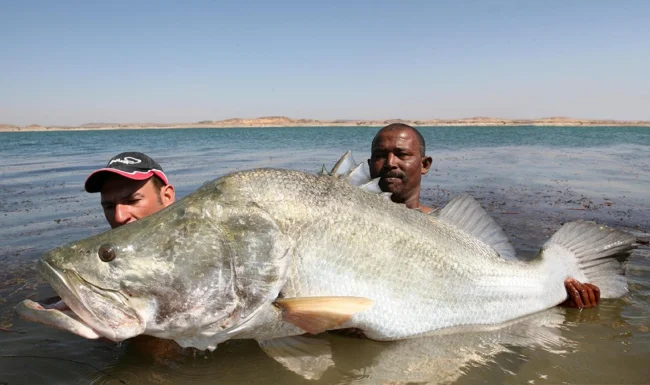
If the common river perch seems familiar and usual to us, then its African relative is a real giant. The Nile perch reaches a length of up to 1.8 m and a weight of up to 180 kg, which makes it the largest among perch-like fish.
This fish lives in the muddy waters of the Nile, and is also found in the Niger, Congo and Senegal rivers. Externally, it differs from the perch we are used to: its color is silvery with a bluish tint, and its eyes are yellow with dark pupils. Sometimes there are individuals with a green-yellow tint of scales.
The Nile perch is a ruthless predator. Its diet includes mollusks, crustaceans, insects, but most often the prey is fish, including its own relatives. In African rivers, it plays a huge role in the ecosystem: on the one hand, it controls the number of small fish, and on the other, it itself is valuable as a source of food for people.
The Common Catfish — a River Giant 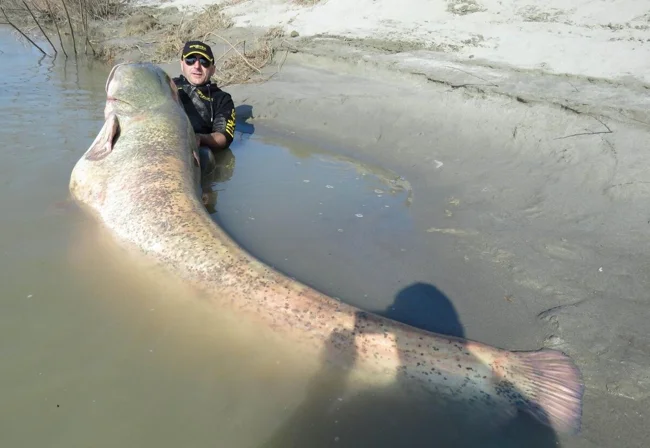
The catfish is one of the most recognizable inhabitants of rivers. It is a scaleless bottom fish with a massive head, a huge mouth and characteristic whiskers that help it navigate in muddy water.
The size of the catfish is impressive: they can grow up to 5 meters in length and weigh more than 100 kg. There are stories about giants weighing 250-300 kg, although there is no scientific evidence for these records yet.
The catfish is a typical predator. Its diet is varied: it eats fish, large invertebrates, amphibians, reptiles, waterfowl and even small mammals. Sometimes there are cases of cannibalism - adult catfish can attack their relatives.
In addition, the catfish is considered the "orderly" of water bodies: it destroys sick and weakened fish, maintaining the health of the population. In ancient stories, you can find descriptions of attacks by giant catfish even on people, although such cases are extremely rare and they remain more a part of legends.
Arapaima - the "ancient dragon" of the Amazon 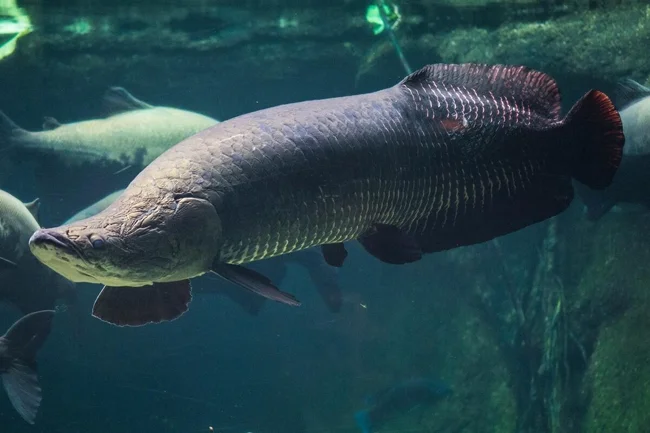
Arapaima (or piararuku) is a real living relic. Scientists consider it one of the oldest fishes that have survived since prehistoric times. This Amazonian giant amazes with its size: its body length can reach 3 meters, and its weight can be 200 kg or more.
The arapaima's body is elongated, slightly flattened on the sides, with powerful scales, which are considered to be among the strongest among all fish. Such "armor" allows the arapaima to survive even in the same body of water with piranhas: their sharp teeth cannot penetrate its multi-layered scales.
The arapaima hunts in an original way: it hides near the surface of the water, imitating a floating log. Birds, small fish, or even small animals become its victims when they come too close. Despite its size, the arapaima leads a calm lifestyle, but at the right moment it turns into a swift predator.
White sturgeon - a century-old giant 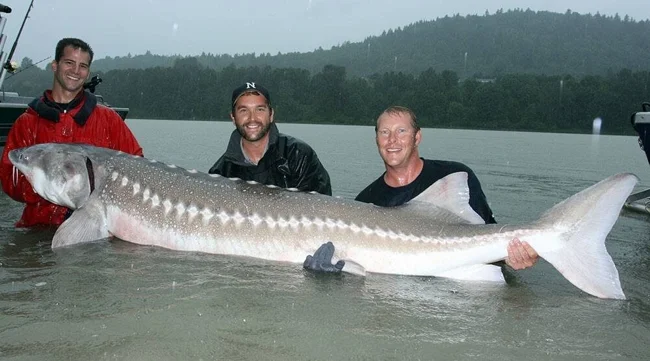
The white sturgeon is the largest freshwater inhabitant of North America and one of the most impressive representatives of the sturgeon family. Individual specimens can reach 4 meters in length and weigh 500 kg.
This fish lives in the slow-moving rivers and bays of the western coast of North America. The white sturgeon is a long-liver: it can live for 100 years or more, and continues to grow all this time.
The sturgeon's diet is quite unique: it feeds mainly on carrion - dead fish, as well as mollusks and crustaceans. Its lifestyle is bottom-dwelling: it spends most of its time at depth, moving along the bottom in search of food.
Giant Freshwater Stingray - A Hovering Monster 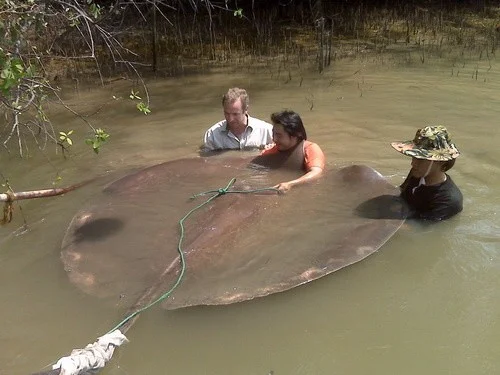
Among the inhabitants of the rivers of Thailand and Indonesia, there is a real giant - the giant freshwater stingray. Its weight can reach 600 kg, and the diameter of the disk - up to 2 meters.
The body of the stingray is flat, disc-shaped, with a long and flexible tail. The upper part is painted in brown tones, which helps it blend in with the bottom, and the lower part is white with gray streaks.
These cartilaginous fish have hardly changed over millions of years. Like their distant ancestors, they burrow into the sand or silt and wait for prey - crabs and shellfish. They navigate using their ability to detect weak electrical impulses emitted by living organisms. Despite their menacing appearance, these rays are generally not aggressive, but a chance encounter with such a giant in the river will certainly cause awe.
Beluga - the queen of sturgeons 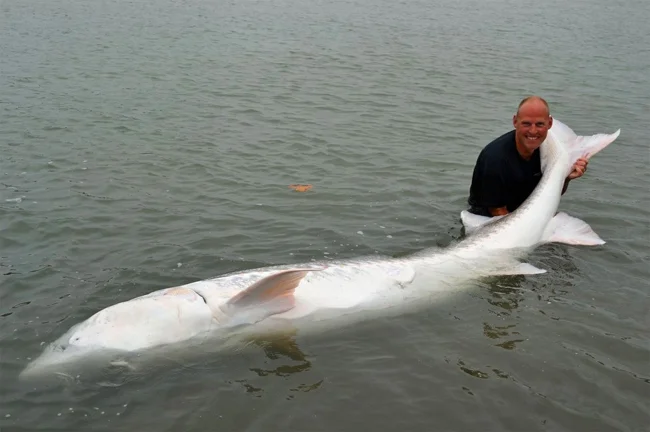
Speaking of river giants, it is impossible not to mention the beluga. Although it is not a purely river fish - the beluga is an anadromous species and enters rivers only to spawn - its size makes it an absolute record holder among freshwater inhabitants.
The beluga can live up to 118 years and does not stop growing all this time. The largest recorded specimen reached 7.4 meters in length and weighed an incredible 1,570 kg.
This fish is especially famous for producing black caviar, which is valued all over the world. However, it is precisely because of fishing that the number of beluga has greatly decreased, and today such giants are extremely rare.
Conclusion
Rivers, at first glance, seem calm and predictable. But their depths hide real giants that can compete in size with sea creatures. Carps amaze with their gluttony and longevity, Nile perch inspires fear with its predatory nature, and catfish are the real rulers of the depths, majestic and mysterious.
Each of these river giants is unique, and it is thanks to them that the life of rivers remains so diverse and amazing.
Add your comment
You might be interested in:






























